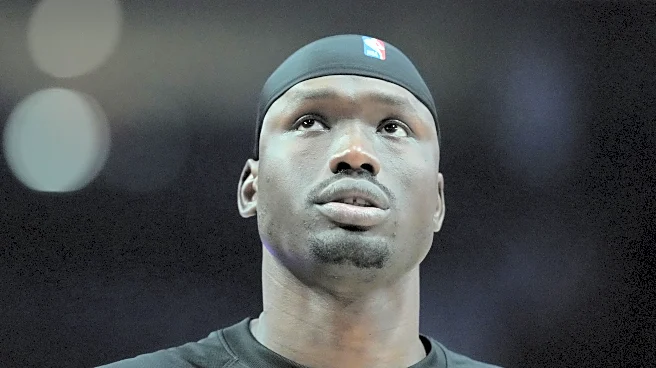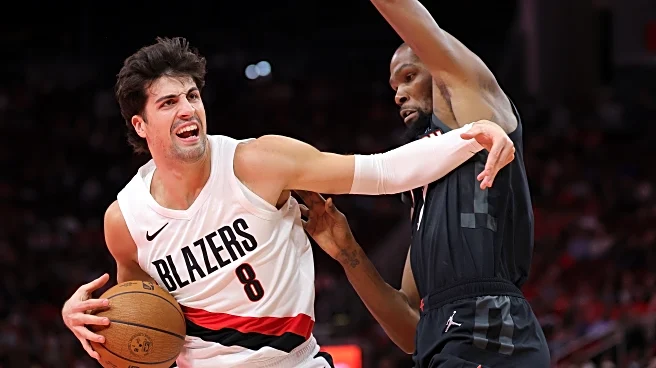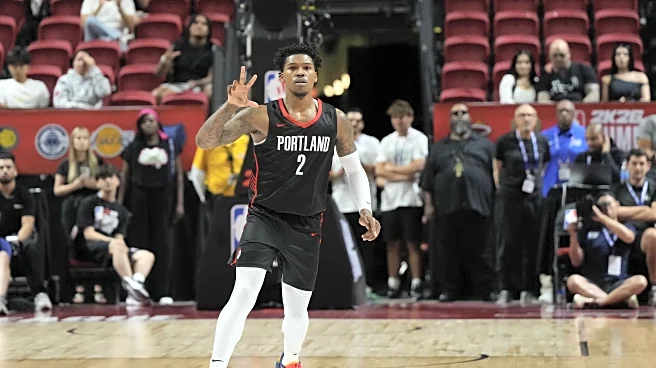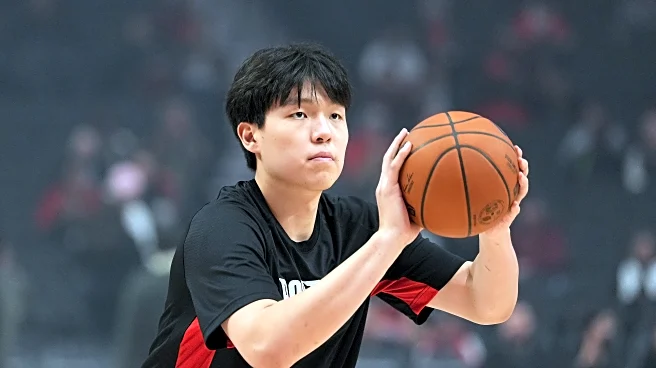No one ever doubted Duop Reath’s ability to shoot the long ball. The Portland Trail Blazers big has been hitting threes for the Blazers since entering the NBA two years ago. Despite the Australian’s size
and skillset, he’s gradually fallen back in the Blazers’ rotation over the past 24 months.
The 29-year-old’s arrival in Portland coincided with Damian Lillard’s initial departure, the latter of which sent the franchise into rebuild. This new era demanded young, athletic talent, regardless of the position they played, meaning that certain positions, including center, could be overendowed as the franchise tested its young group.
While still relatively untapped at NBA ranks, Reath’s talent was roughly understood in 2023 — a situation that likely resulted in him taking a back seat to his younger, more promising teammates over the past two years.
This season, the big man has been used sparingly. But when he has taken the court, he has produced on the offensive end, hitting 4.2 points on 60.0 percent from three (2.2 attempts) and 61.9 percent from the field, to go along with 0.7 boards in 7.9 minutes over nine games.
Let’s take a closer look.
A quick history
The same offseason Reath arrived, Deandre Ayton and Robert Williams III were brought in as part of the Lillard trade. Both players were former first-round picks, still young enough to grow with the young group.
Fortunately for Reath’s opportunities, Williams played a grand total of six games that first season, making the Australian Ayton’s primary backup in 68 games. Reath averaged 18 minutes, 9.1 points on 35.9 percent shooting from three as well as 3.7 boards.
Reath’s path to minutes was made a little harder the next year after the Blazers took Donovan Clingan with the seventh pick at the 2024 NBA Draft. So even with continued injuries to Williams, the rookie from UConn took a large chunk of Reath’s court time, which dwindled to 10.2 minutes in 46 game. Over those appearances, he averaged 4.2 points on 32.1 percent shooting from three to go with 2.0 boards.
Despite buying out Ayton last summer, the Blazers further complicated the situation by drafting 7-foot-1 center Yang Hansen with the 26th pick in June. With Williams hopefully finding some health, Reath seemed to be relegated to fourth string.
A month in and Williams has returned to the court, however, Yang appears to be less ready than expected, pushing Reath back up to third string for the time being.
Reath’s skillset
Reath has proven he belongs in the NBA but it’s unlikely he ever sees real rotation minutes on a contender. At 6’9, he’s still more center than power forward. He can play the four in certain lineups but when teams go small, Reath’s lack of foot speed gets found out against faster smaller forwards and wings.
Similarly, his lack of height makes him a liability against centers like Nikola Jokic and Rudy Gobert who tend to monster him under the rim. Reath isn’t a terrible defender but he tends to fall between the cracks when it comes to matchups.
Having said all that, the shooting is legitimate. Whether it’s hitting five of six from three against the South Bay Lakers with the Rip City Remix his rookie season or four of five from long range against the Oklahoma City Thunder last week, the skill travels. He allows teams to play legitimate five-out lineups for stretches, opening lanes and causing havoc.
Unfortunately, you need to do more than just shoot threes at a high level to be a rotation player on this team.
A lack of Blazers shooting
This season, Reath has found specialized minutes to help compensate for the lack of shooting on this roster. The Blazers traded away its only recognized elite shooter over the summer in Anfernee Simons and Damian Lillard is unlikely to see the court before the start of the 2026-27 season.
This season, the team’s best shooters have been Matisse Thybulle, who has taken a grand total of six shots for 66.7 percent from three. Far from the best sample. I’m also striking out Robert Williams III who’s made one of two shots from behind the line.
Of the Blazers who have attempted more than 20 threes, we have Reath at 60.0 percent, Jerami Grant at 39.7 percent, Deni Avdija at 38.3 percent, Jrue Holiday at 36.5 percent and Toumani Camara at 32.9 percent. The rest of the roster sits below 30 percent, which includes Shaedon Sharpe who is attempting 6.8 a game.
There is absolutely no surprise that Coach Tiago Splitter has called on Reath to help keep the scoreboard ticking over, while simultaneously opening up the floor for the likes of Sharpe, Holiday and Avdija to get into the paint.
Reath’s value on the market
At 29, Reath hits restricted free agency for the first time next summer older than most. It took the Australian national representative a little longer to prove himself in lesser leagues around the world, but when it comes to NBA basketball, it’s better late than never.
His expiring $2.2 million deal won’t get the Blazers much in the way of players that will have a huge impact on the future of the franchise. But he could yield the franchise a couple of second-round draft picks, at the very least.
I could realistically see the Blazers re-signing or matching an offer sheet for Reath on a similarly sized deal in the offseason. He could also be included as another asset in a trade for a player at February’s trade deadline.
Conclusion
I know I’m biased in wanting the guy who represents my country to do well but to see Reath getting minutes and making the most of them, is a joy. This team needs shooting, perhaps more than anything, so there’s no surprise Reath is still on the roster.
Reath isn’t an every night option, the big Australian is more a circumstantial prospect. The guy can shoot the leather out of the ball. Unfortunately, he can’t really facilitate or rebound while also being a neutral-to-below average defender on the other end due to physical measurements that tend to be a liability in the modern NBA.
But NBA teams will always need shooting and with Reath being bigger than guard size, he does allow for some interesting possibilities.














